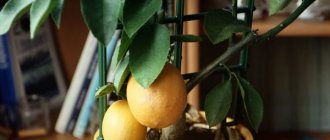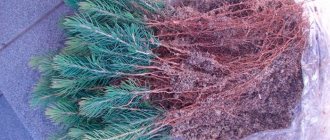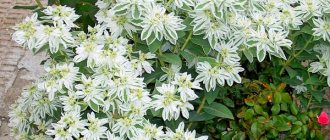I really liked this combination! I wanted to repeat it. Moreover, I have similar dahlias; growing parsley is also not a problem. But I just don’t understand what these pink flowers are. Maybe you can give me some advice?
Anna Yudina, St. Petersburg
Answered by Elena Kolesnikova, candidate of agricultural sciences. Sciences:
– The name of your “charming stranger” is Diascia. It comes from South Africa, and its closest relatives are snapdragon and foxglove. There are many types of diascia, but only about five of them are used in culture.
Question answer
Will purchased seeds grow into what is shown on the bag?
Popular types and varieties
The ampelous diascia includes 50 plant species. Among them are those that are planted most often by gardeners:
- Diascia is vigilant - its buds are painted with soft pink paint. The stems are long and drooping.
- Bearded - a compact plant. Lush flower stalks have different colors.
- Elegant - distinguished by miniature leaves, which are practically invisible during flowering due to the pink flowers.
- Felt - in open ground conditions it can bloom all summer with a variety of unusual colors. But even without them, the shrub is decorated with glossy foliage, which makes it decorative at any time.
In addition to the types of this plant, there are very beautiful varieties that are often planted to decorate gardens or apartments:
- Blackthorn Apricot - flowers with spurs scatter on lodging, thick but soft stems. They are painted in salmon or apricot paint.
- Pink Queen - soft pink buds are decorated not only with their color, but also with a bronze-colored edging.
- Ruby Field - pink flowers with a dark center.
- Diamond Coral Rose is an early variety. This small plant is distinguished by the color of its buds. They are painted with pink-raspberry paint.
- Basya - during flowering, the plant is covered with 2-centimeter velvety flowers of rich pink color.
- Lavender Pink - this variety is valued for its high resistance to sudden temperature changes. This plant also blooms more than other representatives of Diascia with lilac-pink flowers.
- Barbera - the bush is decorated only twice during the entire season with pink buds.
- White magic - blooms early with 7-10 centimeter flowers of light pink color.
Diascia in landscape design
Since Diascia is a hanging plant, it grows well as part of an alpine slide, inside a flowerpot and a hanging flowerpot. Some gardeners plant it in a flowerbed between plants to fill empty space. It goes well with other representatives of the flora, but can independently form a beautiful bouquet. Diascia flowers are also used when creating a small paved area or garden path.
This plant has hanging stems, so it can be planted in a tall flowerpot or hanging container on the balcony. Flowering stems will cascade beautifully, creating a waterfall of buds.
Where to plant?
Diascia is not only a pretty, but also a versatile annual, suitable for any purpose. Most often it is planted in flowerpots, containers, garden vases, hanging boxes and baskets. You can also make nice borders from it along the edges of flower beds and along paths. Well, the group shown in the photograph, where graceful diascia and dense, bright dwarf dahlias are shaded by the delicate greenery of curly parsley leaves, is perfect for both a low mixed flower garden and for decorating an ornamental vegetable garden.
Advice
To preserve diascias in winter, it is better not to replant faded bushes into pots, but at the end of summer, cut cuttings from them and root them. Young plants are kept in a bright, cool room, watered moderately, and at the end of next spring they are planted again in the flower garden.
Growing by seedlings
Work should begin with preparing the substrate, which includes river sand and garden soil. It is better to do this in late February - early March. When using cassettes, loose soil is used, and the seeds are distributed 3 pieces per cell. If the bowls are wide, then sand is combined with seed material and sowing is performed. You need to place the seeds on the surface of the substrate, but do not sprinkle them with soil, but simply press them gently. After this, the planting material is covered with glass or film. In order for the ampelous diascia to sprout, it is recommended to maintain a temperature of 18-20°C. After 10-15 days, under the right conditions, the first shoots will appear. This will indicate that it is time to move the container to a room where the temperature is lower – 10-15°C.
For the successful development of flowers, it is recommended to constantly check the condition of the soil - it should not be dry, but at the same time the water should not stagnate. While the sprouts are not yet strong, it is best to water them using a spray bottle.
If the growing procedure is carried out in a bowl, then 2 weeks after the sprouts appear, you need to pick in separate containers.
To achieve greater growth, density and effectiveness, gardeners recommend pinching the upper parts of the shoots several times during the development period.
After reaching maturity, ampelous varieties must be moved to containers.
When to plant seeds
Seeds for seedlings are sown at the end of winter or at the very beginning of spring; the exact timing depends on the region. Plants that will be placed on verandas and balconies can be sown 1-2 weeks earlier. Planting material must be purchased in specialized stores - this guarantees that the bags will contain seeds of the announced variety, and not a mix or defect.
Table “Time for planting diascia on seedlings and in the ground in different regions”
| Region | Sowing seeds | Landing in the ground |
| Moscow region | Late February-early March | Mid May |
| Siberia | Late March-early April | Last ten days of May - early June |
| Leningrad region | Early April | First ten days of June |
Many gardeners prefer to rely on the lunar calendar. It is better to sow Diascia in the waxing moon phase, on days favorable for the rapid formation of buds and good development of the root system.
Ideal dates for sowing according to the lunar calendar:
- in February: 22, 25 and 26, preferably in the morning;
- in March: March 20, ampelous forms are best planted on the 13th and 14th;
- in April: 1, 2, 5 and 6.
Propagation by cuttings
Diascia flower can be propagated by rooting cuttings. To do this, you need to select an adult shrub. A 7-9 centimeter cutting is separated from it, which has roots, as well as a couple of leaves. Then it is placed in a container. It should be filled with wet river sand (2 parts) and garden soil (3 parts). For wintering, it is recommended to move it to another place that is well lit by the sun, but at the same time has a cool temperature. With the onset of May, the cuttings are pinched from above and then transplanted to open ground.
If the cuttings do not have roots, then the propagation procedure is carried out at the end of summer. To do this, place the specimen in a moist soil mixture. The temperature should be room temperature.
Planting diascia in open ground
Seedlings of this plant are allowed to be planted in open ground only in soil that has had time to warm up well. If there is still a possibility of frost returning, then it is better to postpone this procedure until better times. Most often, the period from May 16 to May 30 is considered suitable for seedlings.
In order for the plant to undergo replanting without unnecessary problems, it is necessary to begin preparations in advance. To do this, it is recommended to take out the container with the flower for a short time every day, gradually increasing this indicator. When it reaches a whole day, then the diascia can be planted in open ground.
It is better to carry out the procedure for transplanting a seedling in a well-lit place where there are no through winds. The site should not be in a lowland, because the plant will die from a large amount of accumulated water. It is recommended to plant it in soil with low acidity and a small amount of nutrients. If the soil is diluted with sand, the bush will develop better. The south side of the buildings is considered more suitable.
When placing flowers around the area, it is necessary to maintain a 15-centimeter distance between them. After the procedure, abundant watering is performed.
Further care of the plant
Diascia flower does not require complex care. For successful development, you only need to carry out regular, timely watering, fertilizing and pruning. Let's consider these points in more detail.
Watering
Frequent and abundant watering should be carried out only during extreme heat and while the shrub is blooming. The main condition for growing a flower is the absence of stagnation of water in the roots. After the procedure, it is necessary to loosen the surface of the earth around the plant and remove weeds.
Top dressing
Fertilizer must be applied once a month. To do this, it is recommended to use special mineral solutions that are intended for flowering specimens in the garden. But the composition must be diluted in low concentration. If there are a lot of nutrients, the plant may react in the opposite direction - the buds may not develop at all. In addition, the diascia will begin to stretch its shoots upward, which will spoil its decorative features.
Trimming
To obtain abundant flowering, it is recommended to regularly remove those flowers that have already faded. When the first wave of flowering is completed, gardeners shorten the bush by ½ part, water it well and apply fertilizer once. This procedure is carried out to further stimulate the development of flowers and stems.
Since ampelous diascia in Russia is an annual plant, it is thrown away in late autumn. But some people prune again and then take it home.
Diseases and pests
This representative of the flora is considered resistant to infection by fungal diseases. But, if you do not comply with the growing conditions and allow the liquid to stagnate, this can provoke the development of stem or root rot.
Varieties whose stems spread along the ground can be damaged by snails and slugs. Therefore, it is recommended to lift them from the ground surface.
Bloom
If diascia was planted through seedlings, then the flowering period begins in July. When cuttings, the plant begins to bloom buds in the last days of May. Until frost sets in, the bush will bloom in several waves.
Wintering of diascia
In order for the plant to survive the winter and delight with its beauty for the next year, it must be carefully removed from the ground, transplanted into a container with loose soil, and the pot moved to a room whose temperature reaches no more than 10 ° C.
At this time, the plant needs a lot of light. It is better to water it no more than once every 10-14 days. With the onset of March, the diascia is cut so that only 10 centimeters of stems remain.
After gradually hardening off after winter, the flower can be transplanted outside.
Recommendations and common mistakes
When growing ampelous diascia, you need to rely on the advice of experienced gardeners. This will help you avoid basic care mistakes:
- In the middle zone and in the north, ampelous diascia is grown as an annual. The frost resistance of the crop is no more than -15 °C. Even in the south, the plant usually freezes out in open ground. If desired, with the onset of autumn, the flower can be dug up, transplanted into a pot and placed in a bright room with a low temperature until spring. But if it is too difficult to organize wintering for diascia, you should simply eliminate the bushes and re-grow them from seeds in the new season.
- The ampel culture requires a moderately fertile substrate, but does not develop well on too rich soil. It does not need abundant fertilizing; if there is an excess of nutrients in the soil, it is better to completely abandon fertilizers.
- Creeping shoots when growing Diascia in the garden may suffer from invasion by slugs and snails. In rainy weather, it is better to remove them from the ground surface and place them on a support.
The plant's resistance to fungal diseases is quite high. But it is necessary to monitor the degree of soil moisture and prevent it from acidifying.
You can grow ampelous diascia in the garden not only in the soil, but also in closed flowerpots
Other perennial hanging plants
Catharanthus ampelous (periwinkle). The Riviera variety has long stems. They grow and branch very quickly. Large flowers do not fade for a long time. Their petals are colored blue and purple and are on the bush from May to August.
Forest cactus Rhipsalis. He is appreciated for his unpretentiousness. Propagated by seed and cuttings. Miniature buds bloom on long thin stems during the flowering period. Despite the fact that this is a cactus, it copes well with decorative purposes. Therefore, it is often installed in offices and homes.
Begonia flowerbed is a spectacular flower. Double and semi-double buds bloom throughout almost the entire year. To propagate it, you need to cut and root the tuber.
Bacopa – green-olive leaves are attached in pairs on long stems. Some of its varieties are distinguished by a two-tier arrangement of petals. In areas with a warm climate, the plant can be grown as a perennial. For the winter you can simply cover it well. In colder areas, bacopa is grown as an annual plant. Here are some of its varieties that gardeners often grow to decorate their gardens:
- Lilac. The shrub is valued for its lush, dense foliage on long stems. Miniature buds are painted lilac. This plant does not require much light to grow. Even in partial shade conditions it will be able to develop well.
- Pink. During the flowering period, lavender petals are colorful against the background of openwork leaves. This variety looks good in combination with petunia.
- Blue. This bacopa blooms for a very long time. Despite its effectiveness, it does not require special attention and care. Gardeners grow the plant in hanging flowerpots and in open ground.
- Blue avalanche. The name itself indicates blue flowers with a lilac tint. They decorate the plant for a long time on long drooping stems with green foliage. This variety can be grown by seeds and cuttings.
- Monier. Its peculiarity is its miniature leaves, which are attached to creeping stems. The length of this oblong foliage is only 0.8-2 mm. Their top is neatly rounded. During flowering, bacopa is covered with white, blue or purple buds.
- Guliver Pink. The lush shrub requires a lot of attention and is very demanding to care for. But, if you follow all the rules during cultivation, then it will delight you with its large flowers.
Reviews with photos about growing Diascia ampelous from seeds
Strizhenova Irina Sergeevna, 36 years old, Moscow
For two years now I have been planting diascia seeds in early March. In this case, the annual plant begins to bloom in June. Growing is quite simple, the seeds sprout quickly and quickly. The culture looks good in the garden both in the ground and in pots. It was even possible to preserve the bushes for the winter, but this is possible at a room temperature of no higher than 12 °C.
Kuznetsova Tamara Pavlovna, 60 years old, Nizhny Novgorod
I planted hanging diascia for the first time last spring, and I really liked the result. The bushes turned out to be not as lush as in many photos, but they still decorated the border. There were no problems during cultivation. Next year I’m thinking of repeating the experiment with a new batch of seeds.










